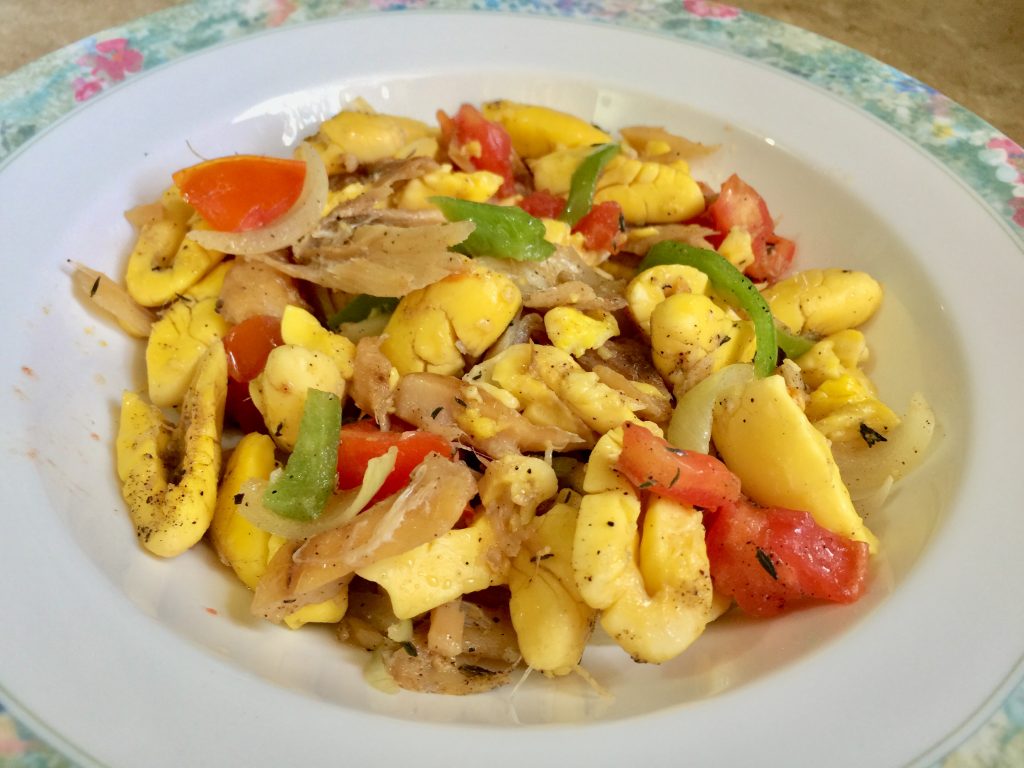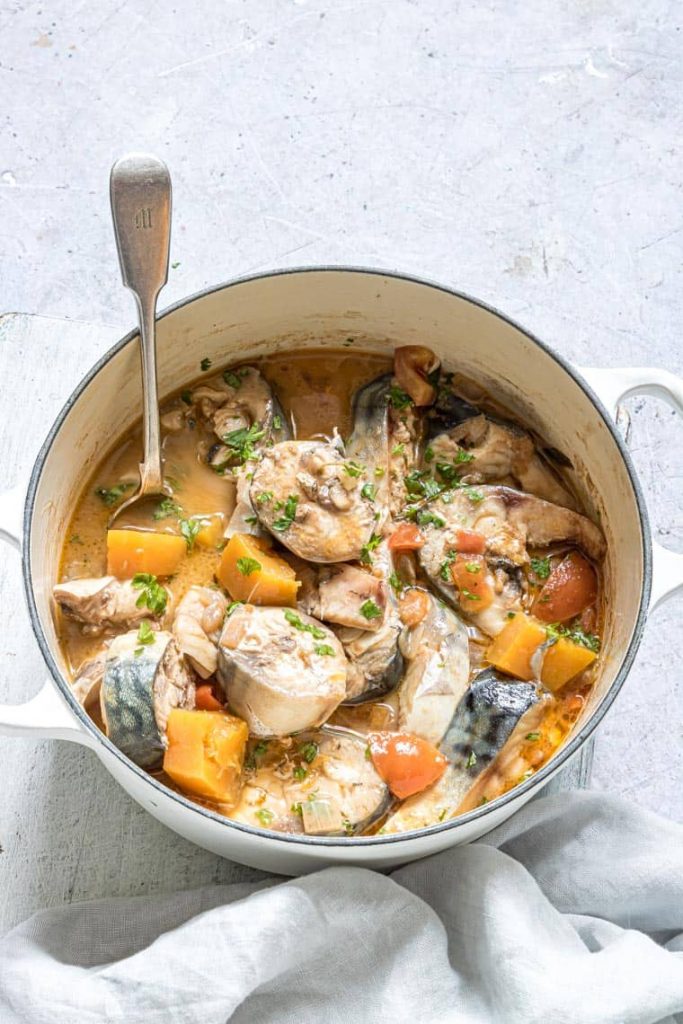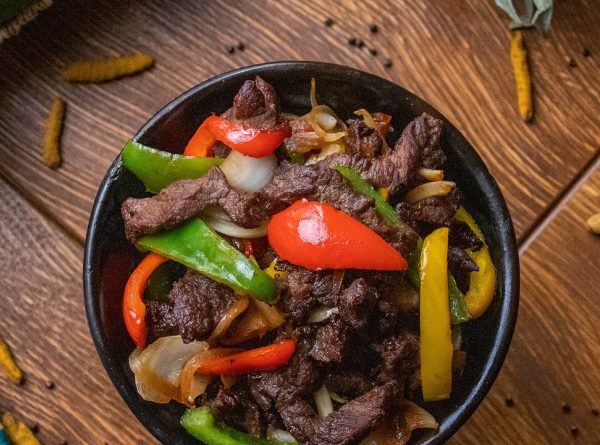
Jamaican foods reflect the nation’s rich history and culture and are a remarkable fusion of African, European, and indigenous traditions. Using jerk seasoning as a standout component, it is renowned for its strong and spicy taste. Several of the meals from Jamaica have become well-known across the world due to the country’s growing popularity. You may learn about the various Jamaican cuisines in this article, such as its well-known meals, and cultural importance.
Jamaican Jerk Chicken

Jamaican jerk chicken is a spicy and flavorful dish popular in Jamaica. It’s made by marinating chicken in a herb and spice mixture before grilling it over pimento wood. The marinade usually contains scallions, thyme, allspice, garlic, ginger, and Scotch bonnet peppers. These ingredients give the chicken its distinct heat and smoky flavor.
Jerk refers to the cooking method which involves slow cooking the chicken over a fire made of pimento wood, giving a distinct smoky flavor. Traditionally, the chicken is grilled over low heat for several hours until tender and the spices have infused into the meat.
Nowadays, you can take this dish to a new level by serving it with complementary foods. If you’re cooking for picky eaters, jerk chicken and its accompanying side dishes are a sure bet. This is also a popular street food in Jamaica. You can find it at roadside stands and food trucks throughout the country.
Jerk seasoning can be used to flavor other meats, such as pork or beef, as well as seafood and vegetables, in addition to chicken. Jerk seasoning is now widely available outside of Jamaica and is used in various Caribbean and fusion dishes worldwide. A unique set of Jamaican foods.
Jamaican Ackee and saltfish

Jamaica’s proud national foods are ackee and saltfish. Tourists, locals, and diasporans all enjoy Jamaican ackee and saltfish because it is authentic, rich, and filling.
The dish consists of ackee fruit, a tropical fruit that is native to West Africa and was introduced to Jamaica during the slave trade, and salted codfish, which was also introduced to the island during the same period. Knowing when the ackee fruit is ripe is the key to making this dish.
You’ll know when it’s ripe because the ackee pod bursts open, revealing a yellow fruit inside.
The perfect combination of Jamaican ackee and saltfish, seasoned harmoniously with Jamaican herbs and spices, results in an authentic, one-of-a-kind, delectable, and satisfying dish. Ackee is a distinct fruit with a creamy texture and a subtle, nutty flavor that pairs well with the saltiness of the codfish. When cooked, it has a yellow color and a texture similar to scrambled eggs, making it an excellent vegan substitute.
Ackee and Saltfish is a popular dish not only in Jamaica but also throughout the Caribbean and worldwide. It is a filling and delicious meal that is ideal for breakfast, lunch, or dinner.
Breakfast or brunch with ackee and saltfish is even better when served with Jamaican fry dumplings, roti or boiled yam, dumplings, and banana. Make a point of trying this authentic Jworldwideyou visit Jamaica.
Jamaican Curry Goat

Jamaican curry goat is a traditional dish popular throughout Jamaica foods and beyond. It’s a hearty and flavorful stew made with tender pieces of goat meat marinated in a complex spice blend and slow-cooked until melt-in-your-mouth tender.
The spice blend, which is a carefully crafted combination of flavors that creates a symphony of taste in the mouth, is at the heart of Jamaican curry goat. A medley of spices, including turmeric, coriander, cumin, fenugreek, and allspice, are blended to create a bold and complex flavor in the curry powder.
Jamaican curry goat is typically served with rice and peas, which are cooked in coconut milk and seasoned with thyme, garlic, and scallions, adding another layer of depth to the dish. Fried plantains are often served on the side, adding a touch of sweetness that balances out the spice and richness of the goat meat.
Overall, Jamaican curry goat is both a culinary and cultural celebration. With its bold and aromatic spices, succulent meat, and hearty accompaniments, it is a dish that speaks to the soul of Jamaica. It’s a true culinary masterpiece that will delight the senses and leave a lasting impression.
Jamaican Escovitch Fish

Jamaican escovitch fish is a dish steeped in tradition and history, and it exemplifies the island’s diverse culinary heritage. Fresh fish is marinated in a spicy vinegar-based sauce before being fried until crispy and served with a medley of tangy pickled vegetables.
Once marinated, the fish is fried until crispy, creating a golden crust that seals in the juicy, succulent flesh inside. The result is a dish that is both crispy and tender, with a complex flavor that is both spicy and tangy.
Another important component of Jamaican escovitch fish is the pickled vegetables served alongside it. The vegetables are usually a mix of sliced onions, carrots, and bell peppers pickled in vinegar, sugar, and spices. The pickled vegetables’ tangy, sweet-and-sour flavor complements the spicy, savory fish perfectly.
Jamaican escovitch fish is typically served with festivals, which is a sweet and savory fried dumpling made with cornmeal and spices. The combination of crispy fish, tangy pickled vegetables, and sweet festival creates a perfect balance of flavors and textures that is sure to please any palate.
Run Down (Fish Stew)

Jamaican cuisine combines African, European, and indigenous Caribbean flavors and techniques. Run down, a hearty and flavorful stew that is a staple in Jamaican cuisine is one dish that perfectly embodies this blending of cultures.
Run down is essentially a rich and creamy coconut milk-based stew simmered with a variety of vegetables and protein. Salted codfish, which is soaked overnight to remove excess salt before flaking and adding to the stew, is the most traditional protein used in run down. Other proteins, such as shrimp or chicken, can also be used instead.
The process of “running down” the coconut milk is an important step in making it run down. This entails simmering the coconut milk until it reduces and thickens, resulting in a rich and velvety sauce that serves as the dish’s foundation.
Jamaican Fish Tea

Fresh fish, vegetables, and various herbs and spices are used to make Jamaican fish tea, a light, and flavorful soup. The broth in the soup is clear and infused with the rich flavors of the ingredients. It is commonly served as an appetizer or as a light meal in Jamaican cuisine.
Red snapper is a firm, white-fleshed fish that fits well in the soup, commonly used in Jamaican fish tea. The fish is cooked in the broth until tender and flavored with the other ingredients.
Pumpkin and okra are two vegetables used in Jamaican fish tea that add sweetness and thickness to the broth. The pumpkin also gives the soup a nice yellow color. Thyme, garlic, scotch bonnet pepper, and lime juice give the soup a distinct and delicious flavor.
Jamaican fish tea is usually served hot with fresh parsley or cilantro on top. It is frequently served with bread or crackers, ideal for dipping into the flavorful broth. The soup is light and refreshing, making it a perfect summer appetizer or light meal.
Conclusion
In summary, Jamaican foods offer a mix of tastes and influences. It is a lively and distinctive culinary culture. Worldwide acclaim has been achieved by its fiery and robust cuisine. Jamaican cuisine also reflects the rich history and culture of the nation, with many of its dishes having significant meanings. Jamaican cuisine is a must-try experience that will leave you wanting more. Be ready to try a set of different Jamaican foods.

